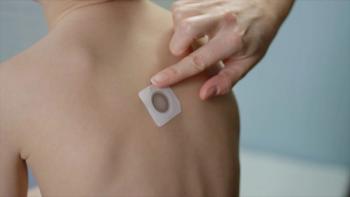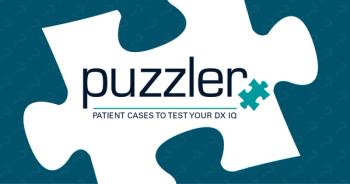Subscribe to Contemporary Pediatrics!
Interested in receiving a copy of the Contemporary Pediatrics journal every month?
Want to stay up to date with pediatric news? Subscribe to the Contemporary Pediatrics e-newsletter to receive emailed updates regarding new data, pediatric clinical trials, puzzler cases, FDA news, and much more.
You can also follow us on LinkedIn, X, Facebook, and Blue Sky.
Thank you for visiting the Contemporary Pediatrics® website. Take a look at some of our top stories from the week (Monday, May 12, to Friday, May 16, 2025), and click on each link to read and watch anything you may have missed.
On May 13, 2025, the FDA approved GE HealthCare’s Optison (Perflutren Protein-Type A Microspheres) for use in pediatric patients, expanding its indication beyond adults. The ultrasound enhancing agent (UEA) is now approved to improve left ventricular border visualization in children with suboptimal echocardiograms—supporting more accurate cardiac assessments and earlier detection of heart abnormalities.
The decision follows positive phase 4 study results showing improved image clarity and diagnostic precision in pediatric patients. Optison, which does not contain polyethylene glycol (PEG), also offers a safer option for patients with PEG hypersensitivity.
Click here for more.
On May 13, 2025, the FDA and HHS Secretary Robert F. Kennedy, Jr. announced plans to begin removing pediatric ingestible fluoride prescription drug products from the market, citing emerging safety concerns related to gut microbiome disruption and thyroid dysfunction. According to the agency, these products—unlike topically applied fluoride in toothpaste and rinses—are ingested, have never been FDA-approved, and may pose heightened risks during childhood development.
The FDA plans to complete a formal safety review and public comment period by October 31, 2025. Although a formal market withdrawal may take years, the agency intends to encourage manufacturers to voluntarily discontinue these products. Meanwhile, the American Dental Association maintains its support for fluoride supplementation when used appropriately, while cautioning against the risk of fluorosis.
Click here for more details, including recommendations from the American Dental Association.
On May 13, 2025, the US Preventive Services Task Force (USPSTF) reaffirmed its 2018 recommendation for early, universal syphilis screening in all pregnant adolescents and adults, concluding with high certainty that screening provides a substantial net benefit. The updated “A” recommendation underscores the importance of timely evaluation and treatment to prevent adverse pregnancy outcomes.
Congenital syphilis can cause serious fetal and neonatal complications—including stillbirth, low birth weight, and neurologic damage. In 2023, the U.S. reported 3,882 cases, the highest number in over 30 years. The USPSTF review found no new evidence that would alter its previous conclusion and emphasized that nearly 90% of congenital syphilis cases could have been prevented with appropriate testing and treatment.
The Task Force encourages screening at the first prenatal visit, with repeat testing later in pregnancy when appropriate.
Click here for more.
On May 14, 2025, Inozyme Pharma reported interim phase 3 results from its ENERGY 3 trial of INZ-701 in children with ENPP1 Deficiency, showing encouraging trends in safety, immunogenicity, and improvements in serum phosphate levels. No patients have discontinued treatment or required dose adjustments, and no new safety signals have emerged.
Among 17 pediatric patients, 15 showed low or undetectable anti-drug antibody responses, with no impact on tolerability. INZ-701 treatment led to sustained increases in serum phosphate, a key marker in addressing rickets and other skeletal complications of ENPP1 Deficiency. Six patients reached normal phosphate levels during the study—none in the control group did.
Topline results are expected in early 2026.
Click here for more.
On May 16, 2025, Sarepta Therapeutics reported positive one-year results from part 2 of the EMBARK trial of delandistrogene moxeparvovec-rokl (ELEVIDYS), its FDA-approved gene therapy for Duchenne muscular dystrophy (DMD). In boys aged 8 to 9 years—an age when motor decline is typically expected—treatment led to statistically significant improvements across all key functional measures compared to an external control cohort.
Notable outcomes included a 4.75-point improvement in NSAA scores (P = 0.0026), faster time-to-rise by 6.87 seconds (P = 0.0010), and a 4.76-second gain in the 10-meter walk/run test (P = 0.0097). No new safety signals were reported, and micro-dystrophin expression remained stable up to 64 weeks post-treatment. These findings support the continued use of gene therapy in older pediatric patients with DMD.
Click here for more.







